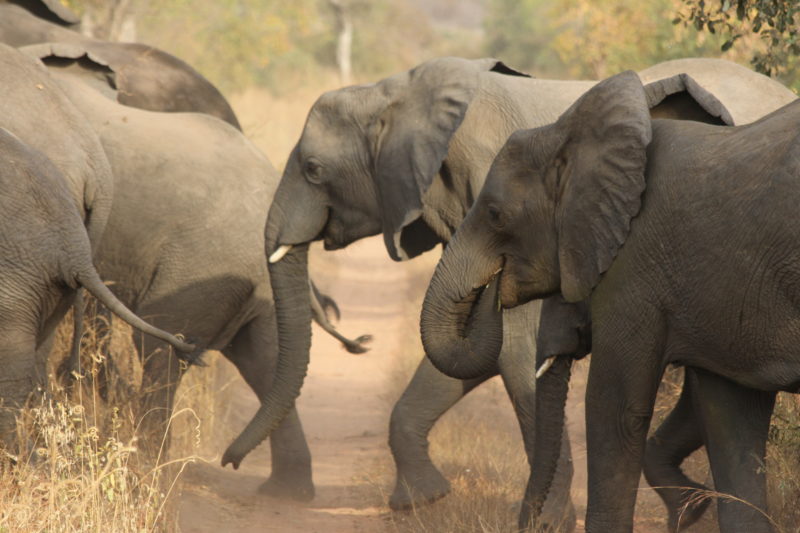It’s easy to kill an elephant, as hunters and ivory poachers have shown for quite some time. Creating one, however, is an entirely different story.

Among the forest elephants in Central Africa, females don’t typically breed until they’re 23 years old – “a markedly late age of maturity relative to other mammals,” notes Andrea Turkalo, a scientist for the Wildlife Conservation Society. Two years’ elapse from conception to birth. And a new calf comes along just once every five or six years.
Given their low birthrate and poachers’ massive killing of herds from 2002 to 2011, a new study’s description of that decade as “a lost century” doesn’t seem much like hyperbole. Commissioned by the conservation organisation, the study concludes that it will take forest elephants 90 years for their numbers to recover.
That’s a daunting projection, but the study doesn’t go so far as to say forest elephants are threatened with extinction. Loxodonta cyclotis lives in scattered groups; some populations are doing marginally well, others not so much. “I would not feel confident in saying the species will be extinct based on what we know currently,” said George Wittemyer, a professor of wildlife conservation at Colorado State University, who wrote the study with Turkalo. “Rather, it looks like we are at risk of losing important populations within the next decade if things do not change.”
The purpose of the study, published on Wednesday in the Journal of Applied Ecology, was “to fill in the massive lack of understanding of the basic biology of forest elephants,” Wittemyer said. They are among the largest animals to walk the Earth, but their numbers and biology are still largely unknown to science. The researchers analysed 80 surveys carried out between 2002 and 2011 throughout the Central African forest block in Gabon, Cameroon, Congo and the Democratic Republic of Congo.
The work was funded by a long list of conservation groups, including the Jane Goodall Institute, and federal agencies, such as the U.S. Fish and Wildlife Service.
The analysis yielded several disturbing findings. In the study years, the known populations of forest elephants declined by 62 percent. As a result, the giants are disappearing from their range. The remaining populations are only 10 percent of what their habitat could support because of killings by poachers hoping to cash in on China’s ivory black market. Development also is expanding into these areas and people occasionally kill forest elephants for meat.
The huge losses not only threaten forest elephants’ long-term survival but the health of the forest. Forest elephants are prolific fruit eaters, and their snacking spreads seeds far and wide. Their migration tramples the ground and opens paths, allowing seeds to take root and grow the forest. Failing to protect the elephants is akin to failing to protect forests that are crucial to absorbing carbon gases in a warming world, the researchers say.
A second purpose of the study was thinly veiled: activism. The Wildlife Conservation Society and the other funding groups are out to save elephants in both the forest and savanna, and the study is a message to international policymakers to get even tougher on the now-banned ivory trade. It’s also a message to the Chinese government to do more to reverse that country’s cultural yearning for ivory.
Wittemyer said historical data on forest elephants isn’t very accurate, but the survey analysis showed that their mortality has accelerated because of the ivory trade.
“This paper is really targeting policy around the ivory trade and awareness around the impact of the ivory trade on the species in the hopes that actions can reduce the economic incentives for poaching,” Wittemyer said. “We hope this paper will influence consuming nations … to change their behavior and to set in place policies that discourage ivory consumption.”
By Darryl Fears, The Washington Post
